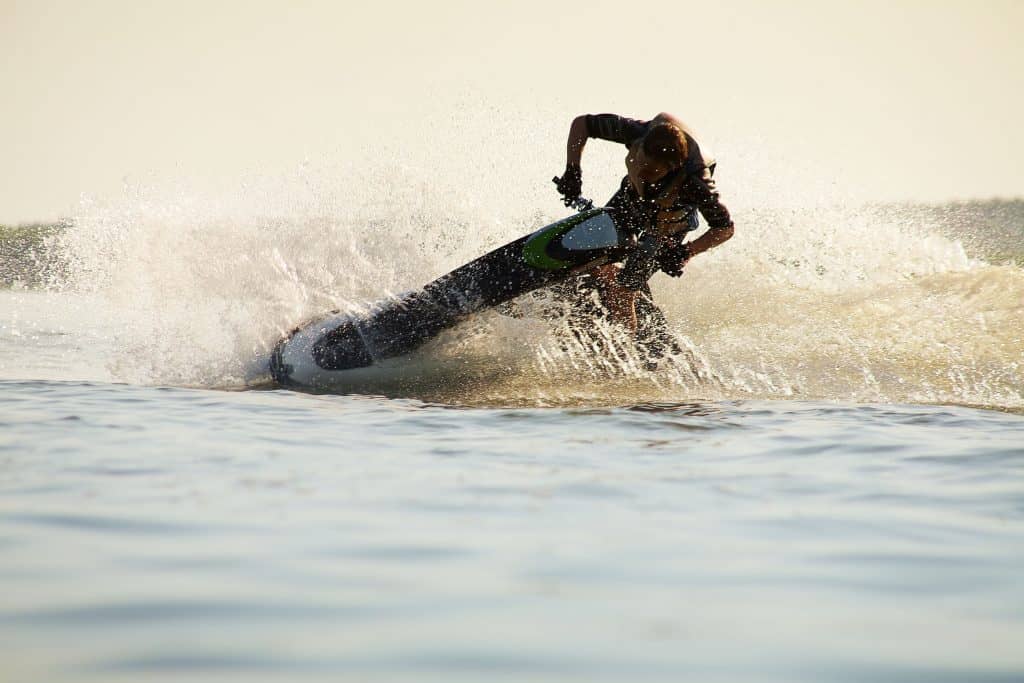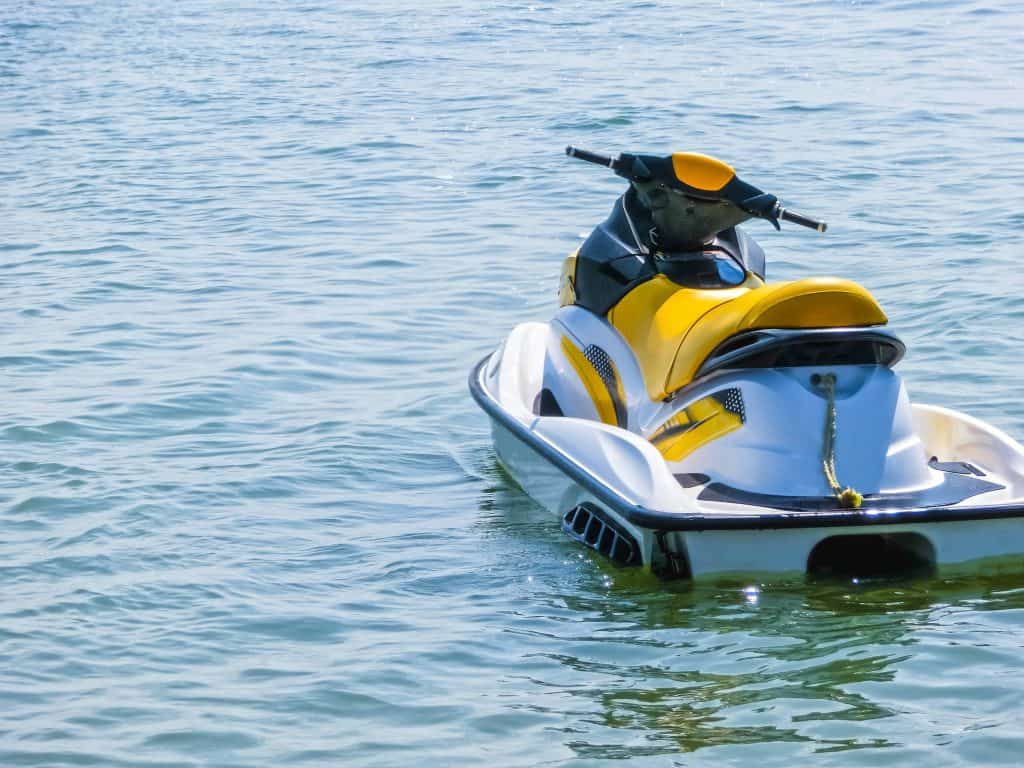Jet skiing in the summer is perfect for spending the day having fun. In order to ensure you don’t come across any trouble, you have to be sure that you know the regulations for jet skiing in the state of Minnesota. Rules and regulations can vary from state to state and it is a need-to-know in order to be able to enjoy your time on the water.
If you are 13 years of age and you want to operate a PWC you will need to have someone at least 21 years of age on board the PWC with you. Or you can carry a Watercraft Operator’s Permit with you while on board a PWC with an adult watching you. Though if you are between the ages of 14 and 17 you must have an adult on board with you or carry a Watercraft Operator’s permit.
It is important to be aware of the following regulations and laws for riding a jet ski on the water within the state of Minnesota. By doing so you are responsibly following the law and that will guarantee you have an adventurous and stress-free time on your jet ski with family and friends.

Registering Your PWC or Vessel
Minnesota Registration Fees
| TYPE OF WATERCRAFT | REGISTRATION FEE | AQUATIC INVASIVE SPECIES SURCHARGE | ISSUING FEE (If new or transfer: $8.50, if renewing $4.50-8.50, and if renewal only $6.00) |
| Personal Watercraft | $37.50 | $5.00 | + issuing fee |
| Pleasure craft less than 17 feet | $18.00 | $5.00 | + issuing fee |
| Craft 17 feet up to and including 19 feet | $27.00 | $5.00 | + issuing fee |
| Craft over 19 feet but less than 26 feet | $45.00 | $5.00 | + issuing fee |
| Craft 26 feet but less than 40 feet | $67.50 | $5.00 | + issuing fee |
| Craft 40 feet in length and over | $75.00 | $5.00 | + issuing fee |
Numbers and Stickers
Once you receive your registration number and the validation stickers you must display these items in the following ways:
- Each number must in block letters and three inches high.
- The color of your numbers must also be in contrast to the color of your vessel.
- The letters have to separate from the numbers with a hyphen or space.
- There cannot be any other numbers shown on the bow of the vessel.
- Each number should be painted, applied onto your vessel as a decal, or place to be shown on both sides of the bow.
- The numbers must be read from left to right on both sides.
Hull Identification Number
A hull identification number is a 12-digit number that is assigned by the manufacturer to the vessel built after the year 1972. HIN helps be able to determine the difference between other vessels and identify the owner as well.
In case of the event that your vessel is stolen you should write down your HIN number and place it somewhere safe and secure.

The Basics
Negligent and Reckless Operation of a Vessel
Reckless Operation
Recklessly operating and being negligent of the rules for operating a vessel or PWC is putting yourself and others in danger. The following are examples of negligent and reckless operation of a PWC:
- Encircling people that are participating in water activities. Unless you are retrieving someone who is downed in the water. Do not operate a PWC around:
- Anyone who is swimming nearby.
- Unsafely approaching or passing a dock, ramp, a moored or anchored or even a swimming area that is marked is illegal.
- Any other PWC or vessel.
- Anyone who is on a PWC or vessel that is fishing, water skiing, or engaging in water activity.
Improper Speed or Distance
Failing to go at a reasonable speed and even going faster than the speed recommended, especially during vessel traffic, poor weather conditions, and closeness to shore can result in injuries.
To be more specific, here are some actions that are considered to be illegal in the state of Minnesota:
- Operating your vessel at extreme speeds in the close vicinity of another vessel, PWCs or dangerous waters.
- Operating at a greater speed than “slow, no wake speed” that is posted in a “no wake” zone.
- Being within 20 feet of the outer boundary area that is marked by signs and buoys of it being in a restricted area.
- Roaming around a swimming area (within 20 feet) and it is marked with red and yellow buoys.
- Going faster than the speed limit posted near the body of water you are operating on.
- Operating your PWC within 20 feet of another person who is fishing (without gaining their permission first)
- Going at a speed that can be harmful to your vessel.
Alcohol and Drugs
In the state of Minnesota, it is against the law to boat under the influence. You can be convicted of boating under the influence if you have a blood alcohol concentration of 0.08% greater.
On your first violation, you can be subjected to a fine of up to $1,000 and any surcharge of jail time as well as a loss of PWC or vessel privileges for up to 90 days.
PWC Rules and Regulations
Reckless operation of a PWC is not allowed. Examples of this are:
- Jumping a wake too close to another vessel
- Weaving through vessel traffic carelessly
- Swerving last minute to avoid collision with another vessel
- Carrying more passengers on your PWC than is recommended
- If you maneuver your PWC in a way that it causes harm to you or your passengers
Each person on board your PWC must wear a U.S. Coast Guard approved type 1, 2, or 3 personal flotation devices.
You cannot operate a PWC within 500 feet of a designated swimming area.
It is illegal to operate your PWC between sunset and sunrise. This is because it can be especially difficult to see during those late hours of the day.
The safety ignition switch must be fully functional and have a lanyard attached to it to ensure it does not get lost or misplaced.
You cannot remove any backfire flame arrestor or ventilators if it is installed by your manufacturer.
You must have a whistle or horn (for emergency use) onboard your PWC that is also U.S. Coast Guard approved.

Required Equipment
Personal Flotation Devices
| TYPE 1 | TYPE 2 | TYPE 3 | TYPE 4 | TYPE 5 |
| Offshore Life Jackets | Near-Shore Vests | Flotation Aids | Throwable Devices | Special-Use Devices |
| This vest can turn an unconscious person in the water to face up in the water. It was made for rough waters and for situations where rescue might take a long time. | This vest is fit for calmer waters and faster rescues. If you were to wear this whole unconscious it may not be able to turn your face up in the water. | This vest can also be full-sleeved jacket and it is great for calm waters and fast rescues. This will definitely not turn your face in rough waters. This is generally worn for water sports. | This type of flotation device is a cushion or ring buoys and and are typically used to throw at someone in trouble. They are not made to last for long hours in the water, or non-swimmers, or the unconscious. | This type of flotation device was made for activities like kayaking, water-skiing These typically look like white water vests, deck suits, and personal flotation device hybrids. |
Requirements for PFDs
- Anyone that is on board a PWC or vessel (no matter their age) must wear a personal flotation device keep them safe.
- A Type 4 personal flotation device that is approved by the U.S. Coast Guard must be on board a vessel that is 16 feet or longer and it must also be easily accessible for emergency use.
- Vessels have to have 1 of the 5 personal flotation devices on board and they must also be an appropriate size for almost anyone to wear.
Fire Extinguishers
You can classify your fire extinguishers by letter and number symbol. The number helps you decipher the size of the extinguishers, and the letter indicates the type of fire that is extinguisher can be used for as well.
| Type A Fires | Type B Fires | Type C Fires |
| These types of fires are combustible solids such as wood. | These types of fires are flammable liquids like gasoline or oil. | This type of fire is mainly electrical fires. |
These fire extinguishers must stay in a usable condition. You need to regularly check up on the extinguishers to ensure they are in the best condition:
- There is no physical damage, corrosion, leakage, or clogged nozzle
- Pressure gauges or indicators read in the operable range
- Seals and tamper indicators are not broken or missing
What To Do in an Accident
In the event of an accident you must do the following:
- Stop the vessel or PWC you are on immediately.
- Assist those who are injured or in danger, unless it puts you or others in danger.
- You will need to give, in writing, the name of the injured, their address, and the vessel identification to the person injured and the owner of the property that was damaged.
Law Enforcement
It is required by law that in the event of an accident, the PWC operator must report the accident as soon as possible to the local county sheriff if the accident has resulted in any of the following:
- Damage to property that exceeds $2,000
- The complete and total loss of your boat or PWC
- A death
- Personal injury
If another boat or property becomes involved in an accident you must provide the name, address, and registration number of the person involved to the owner of the property or PWC.
